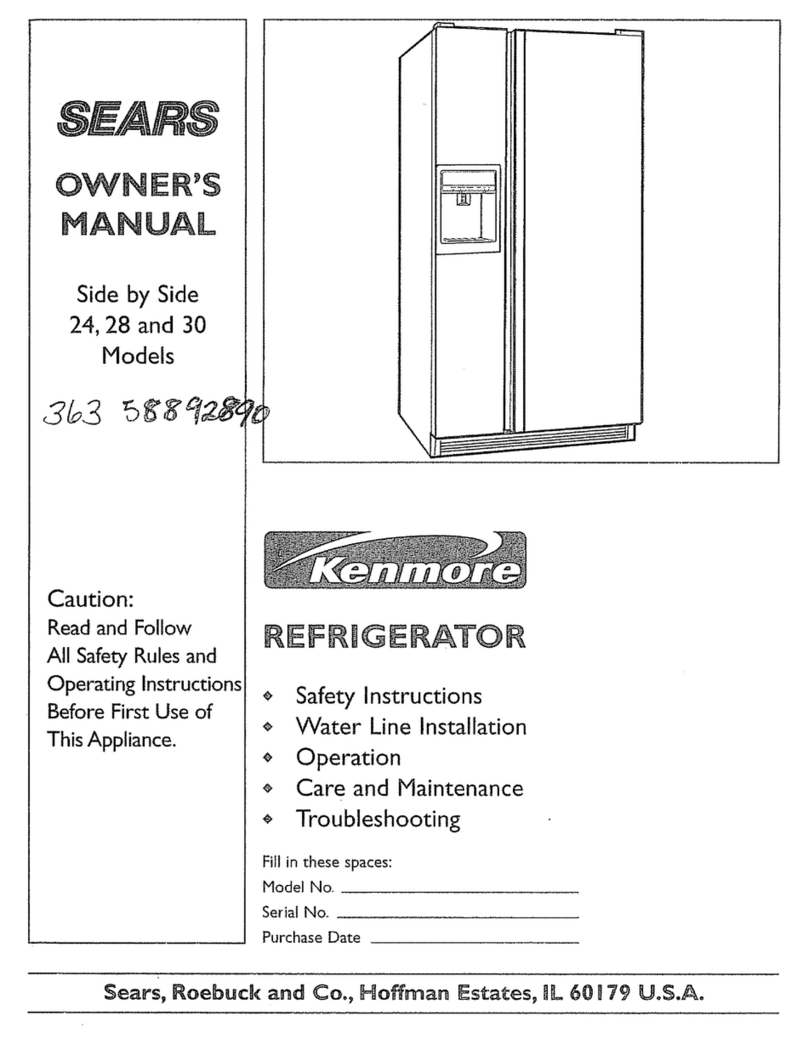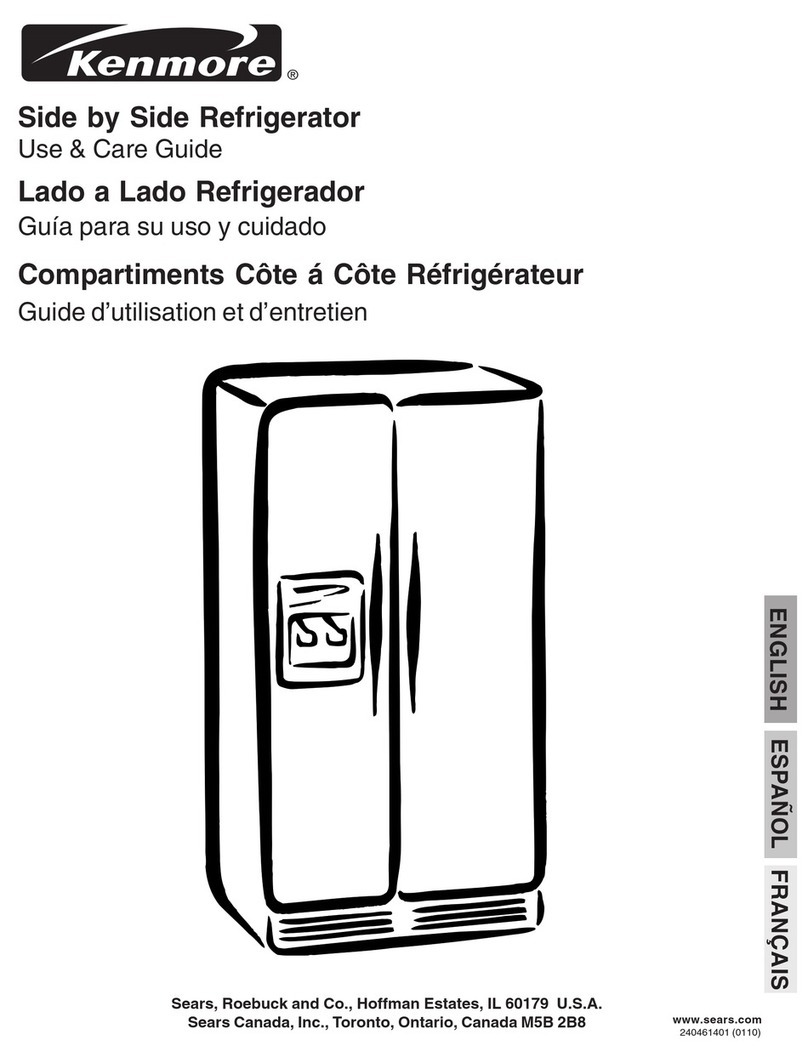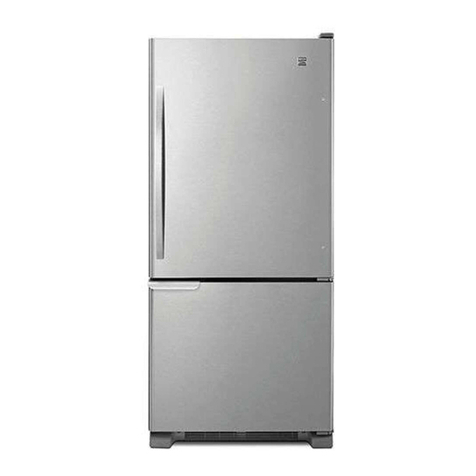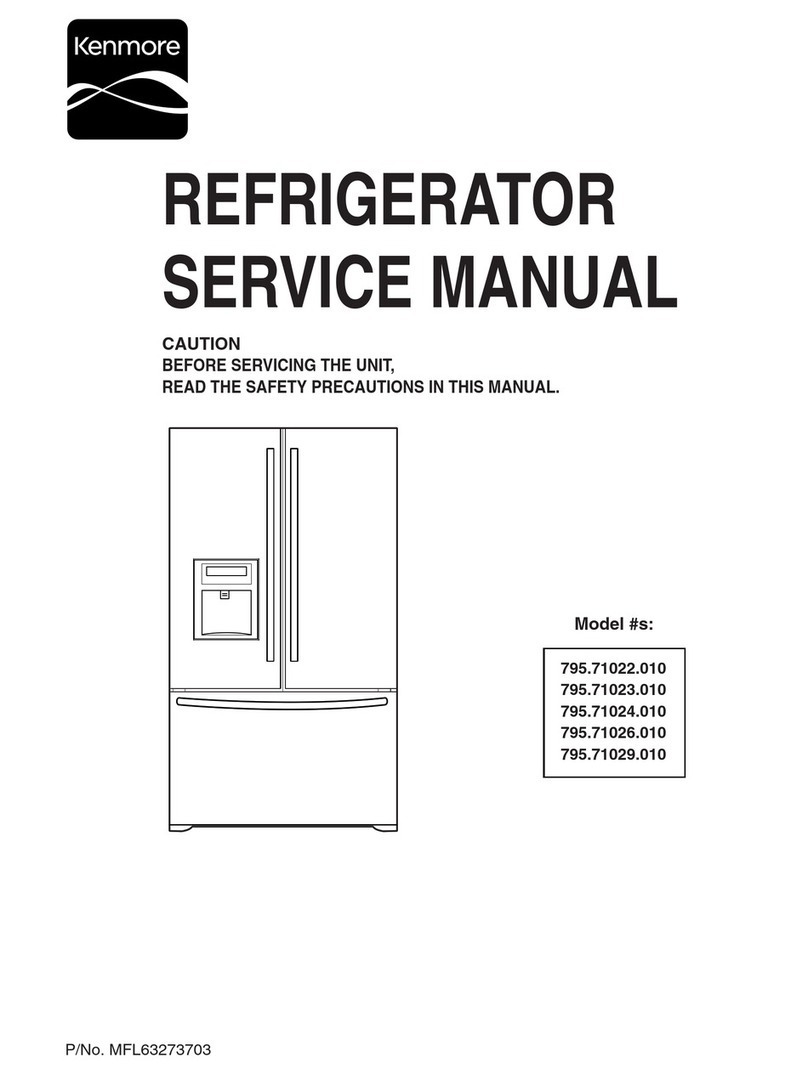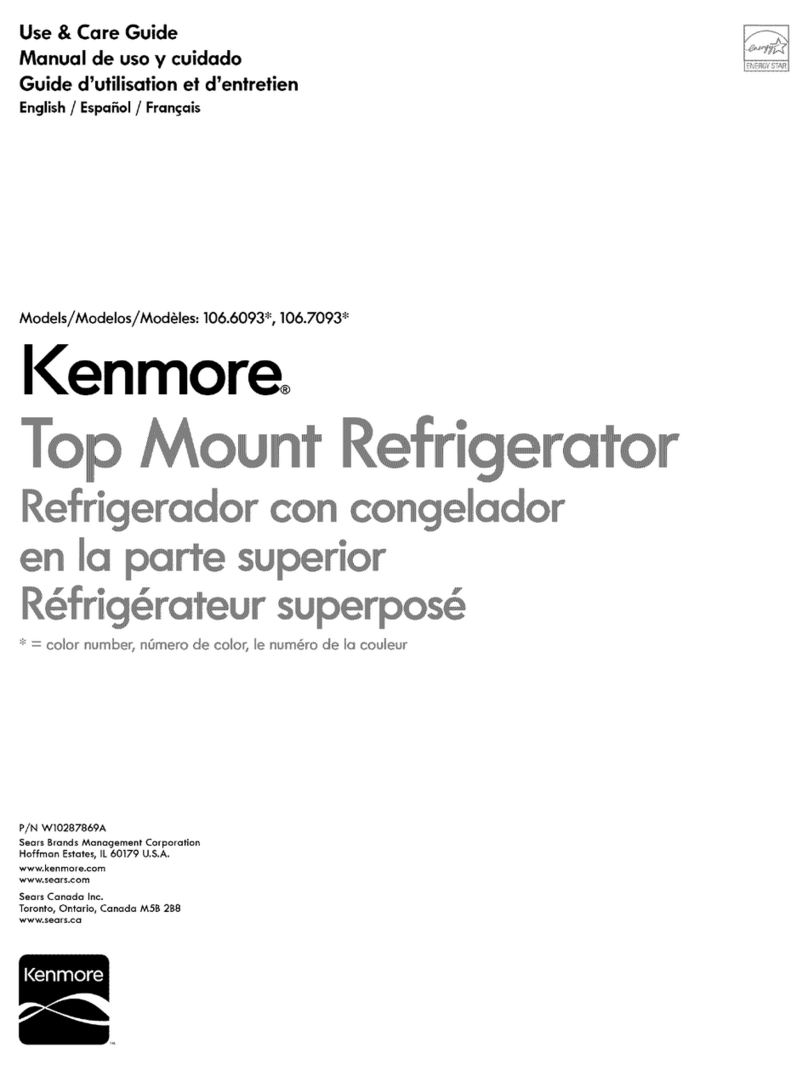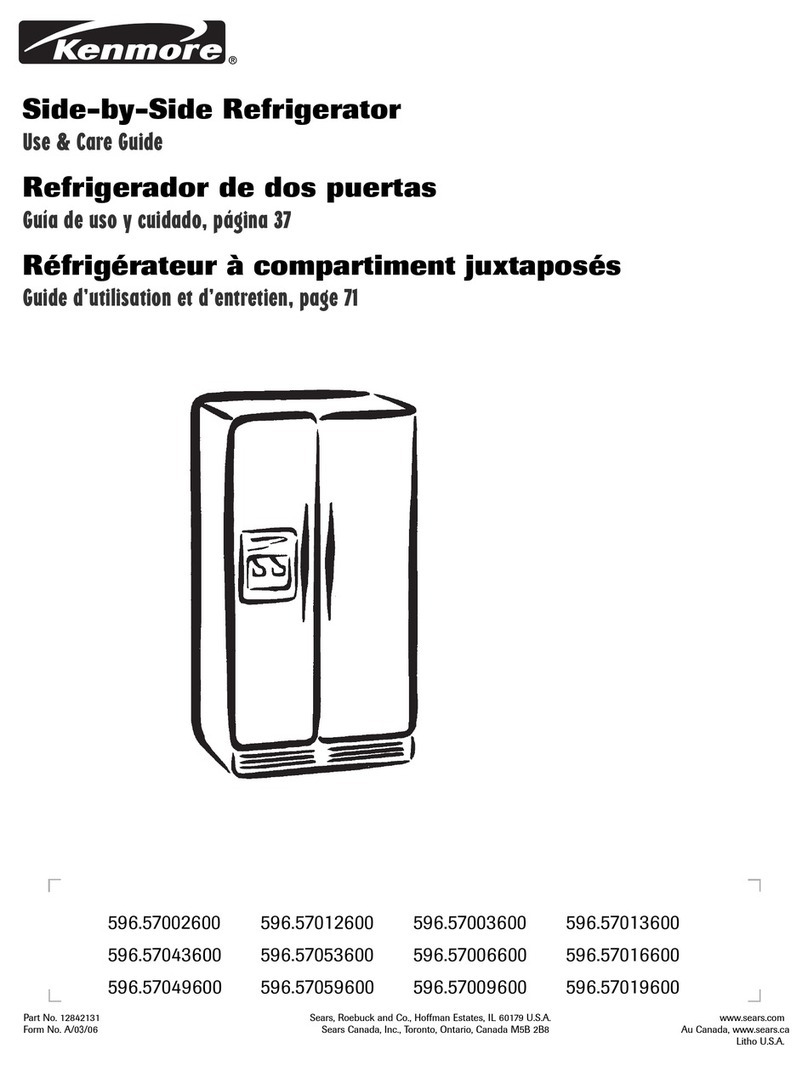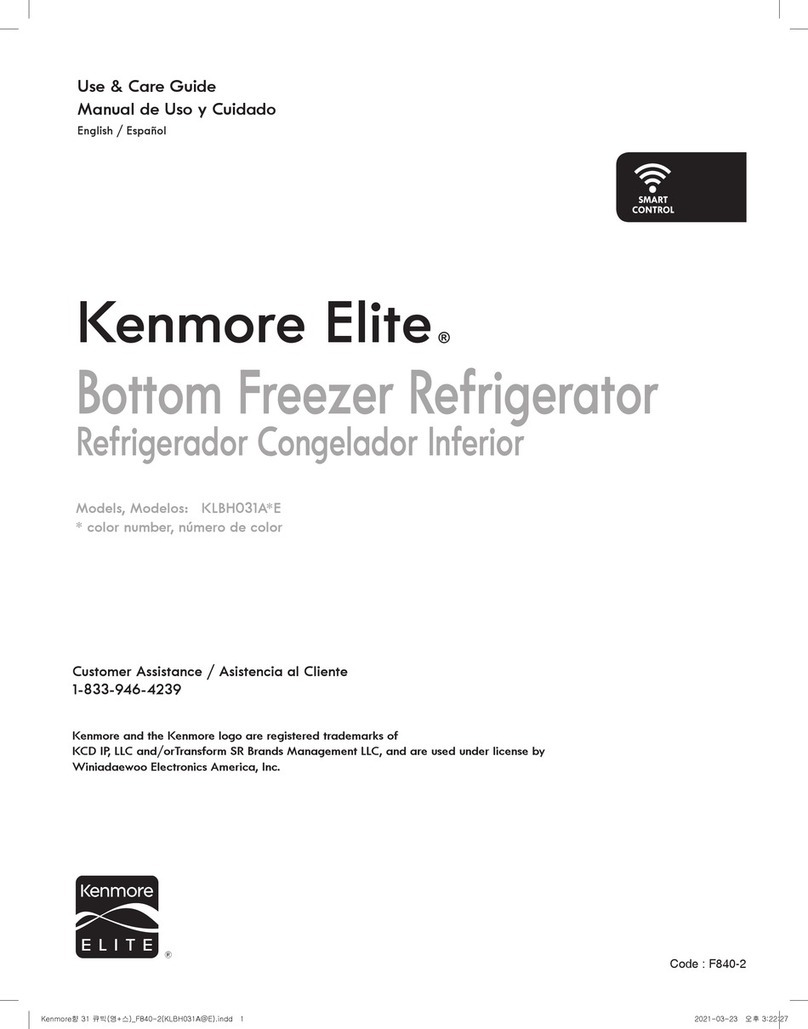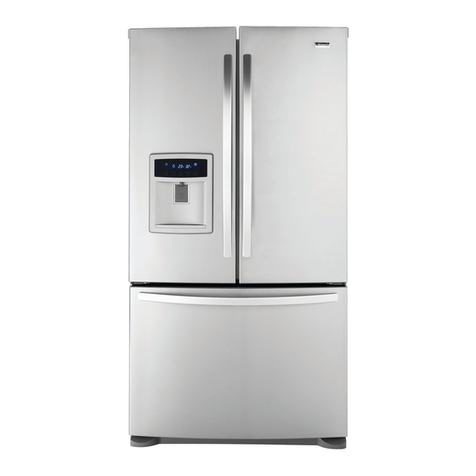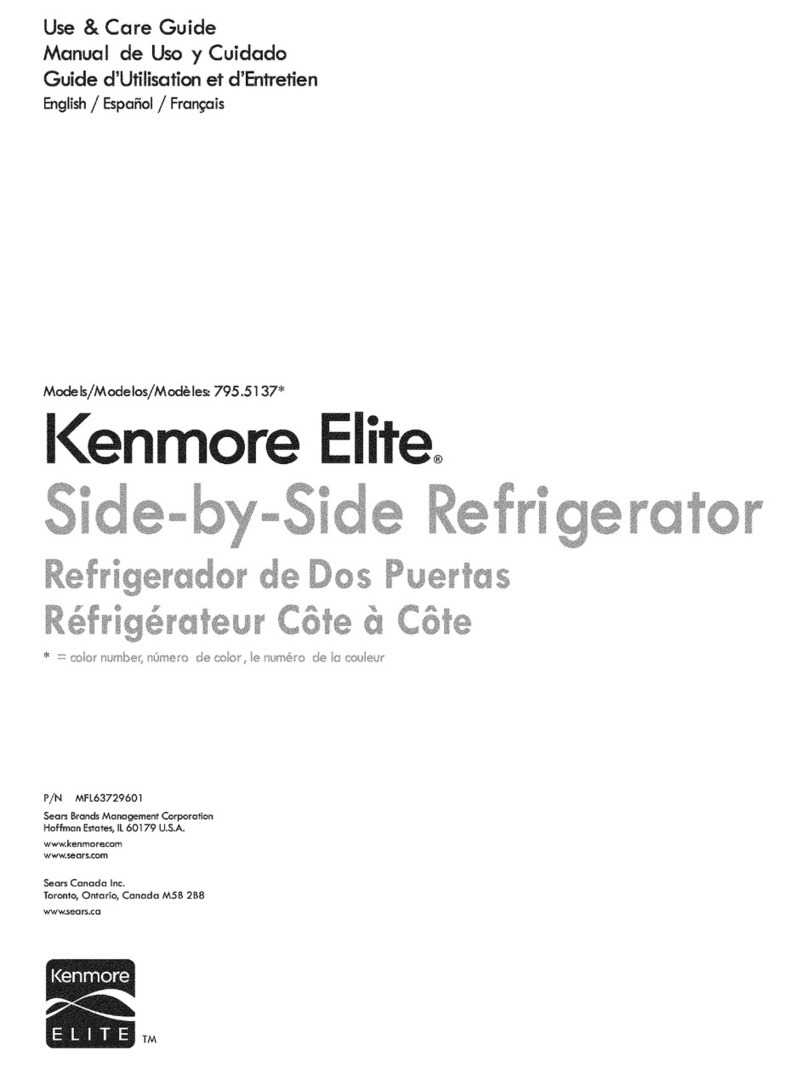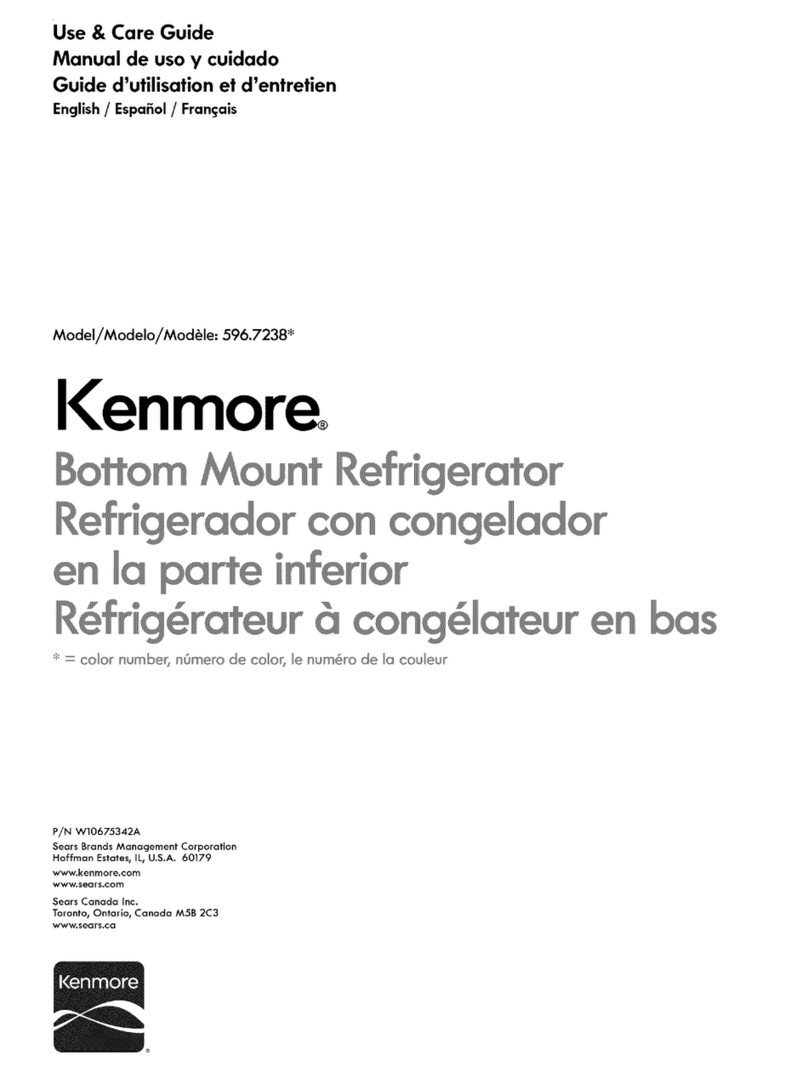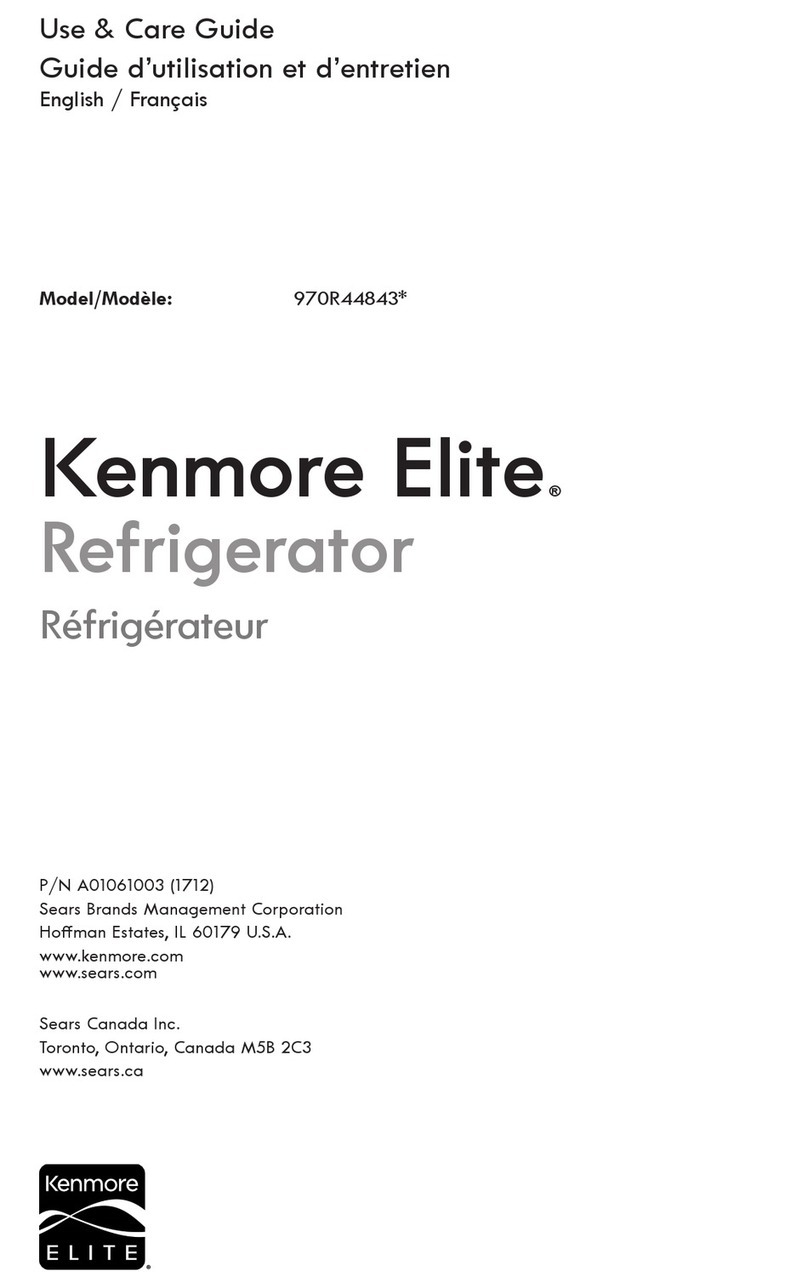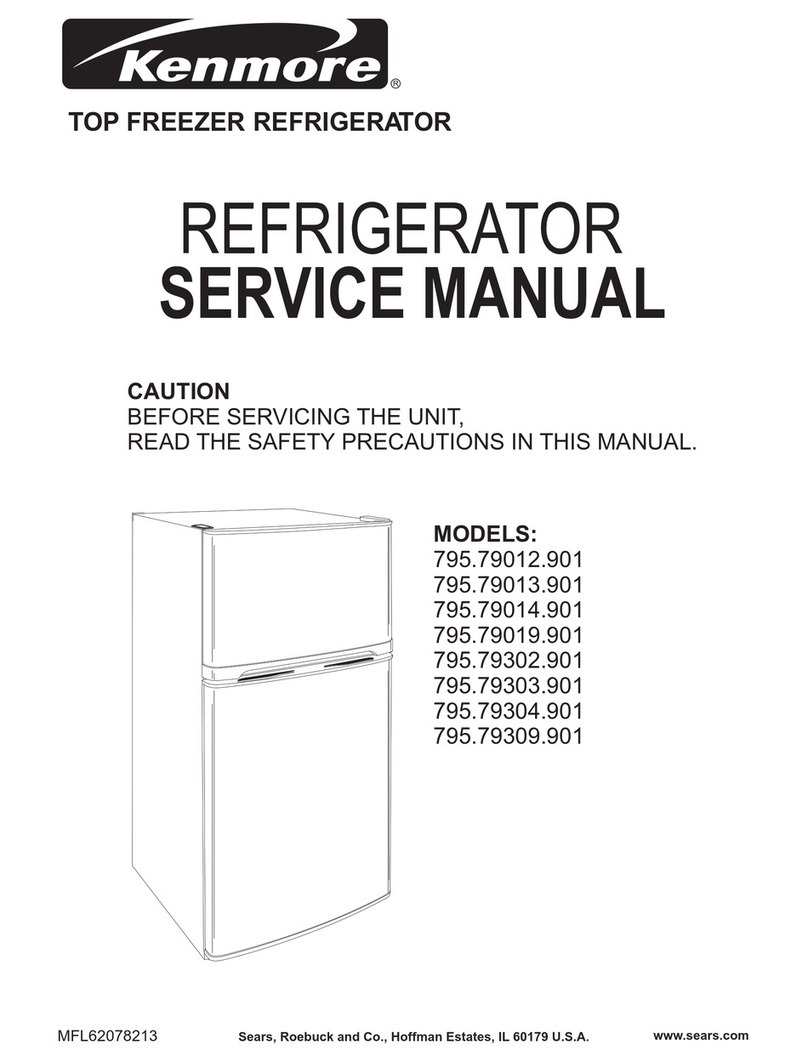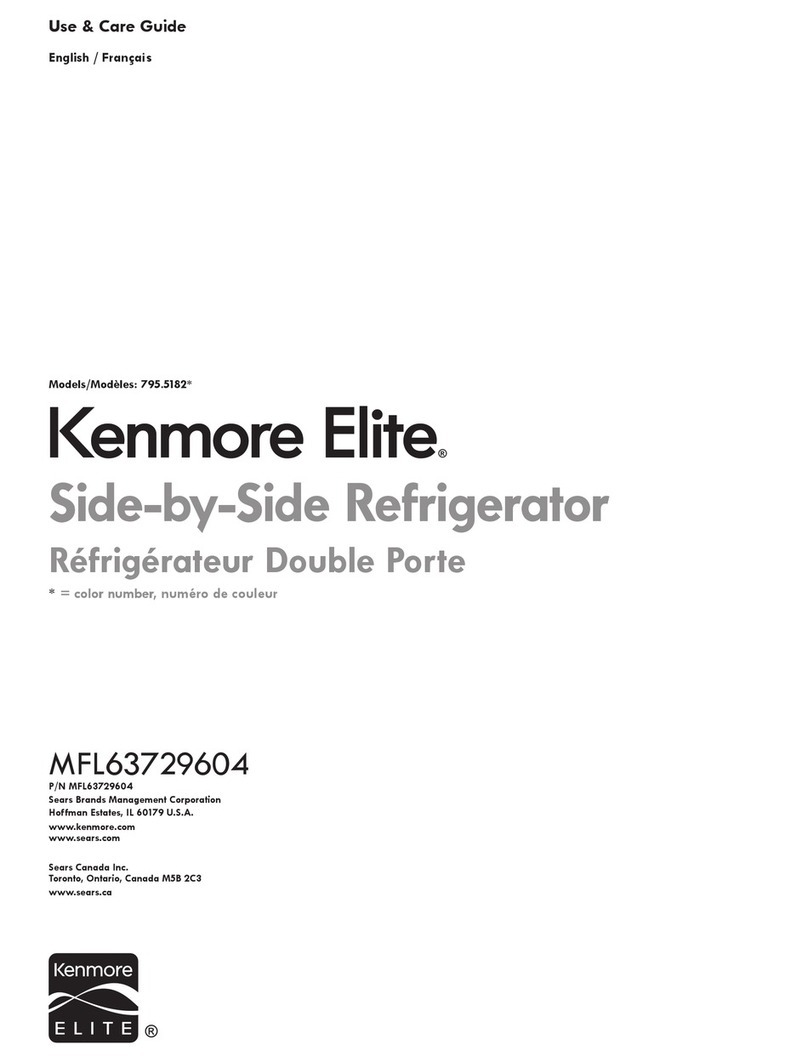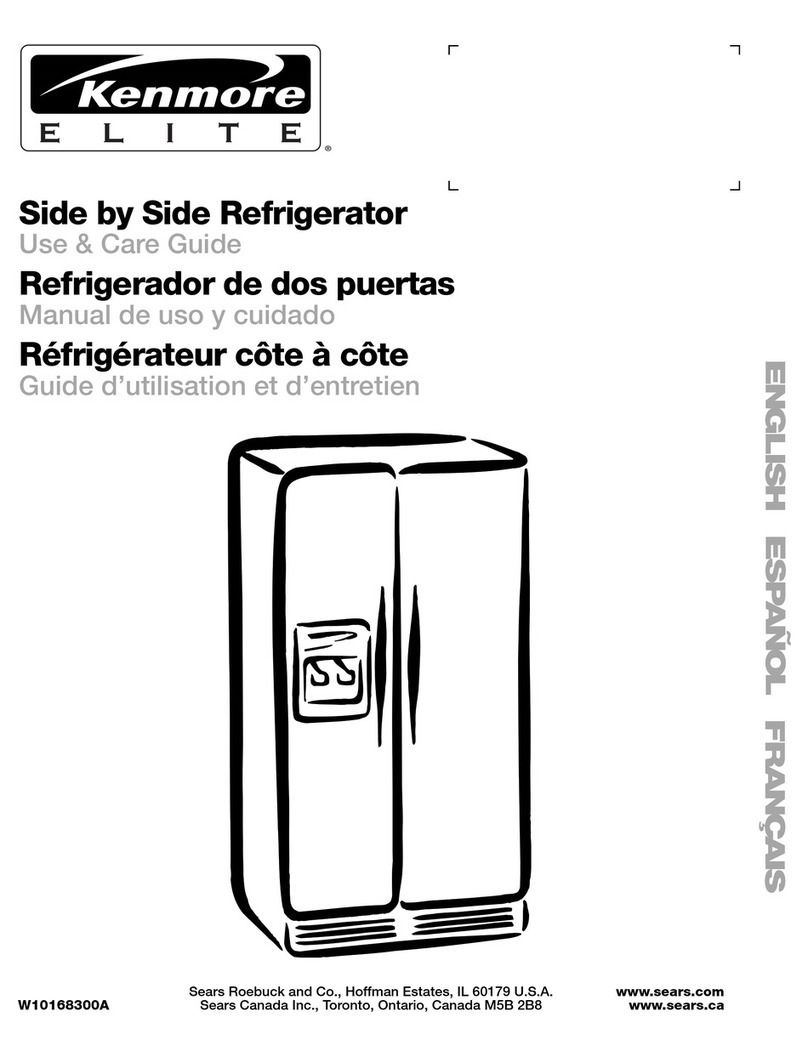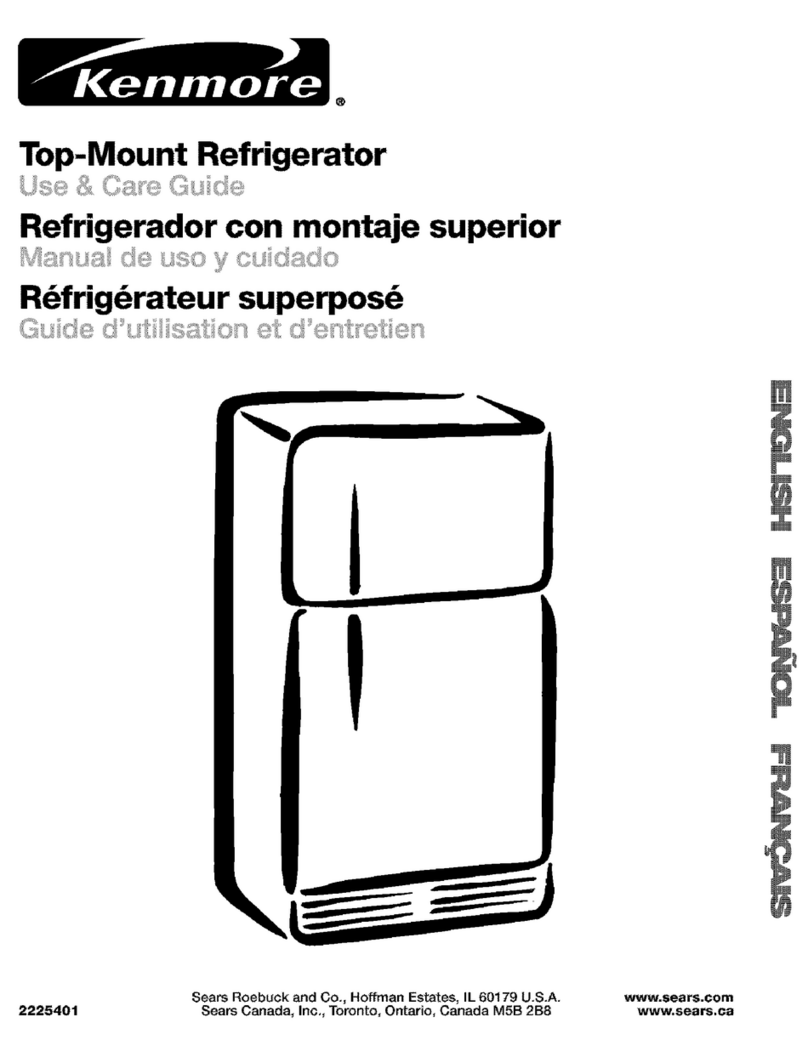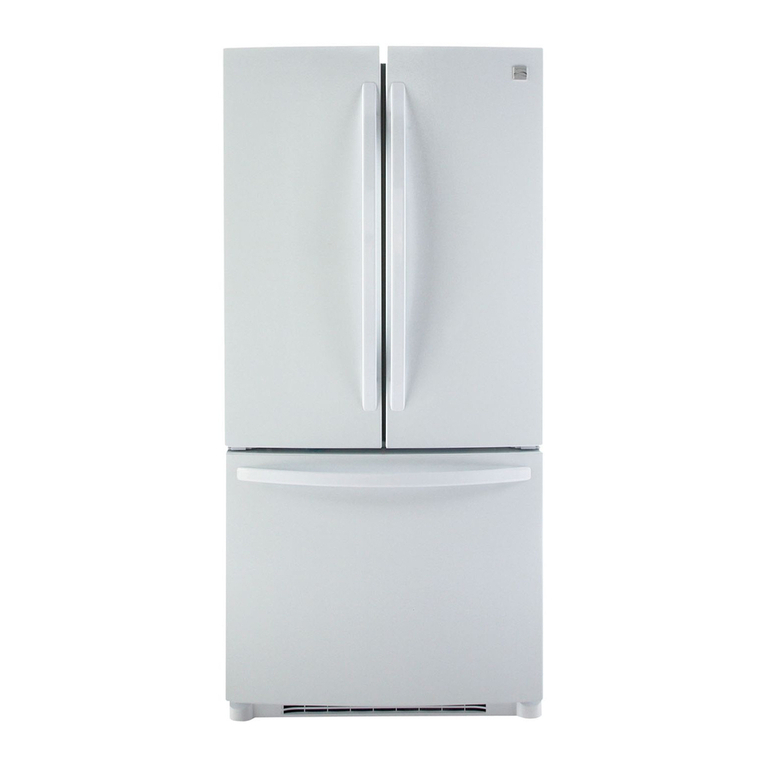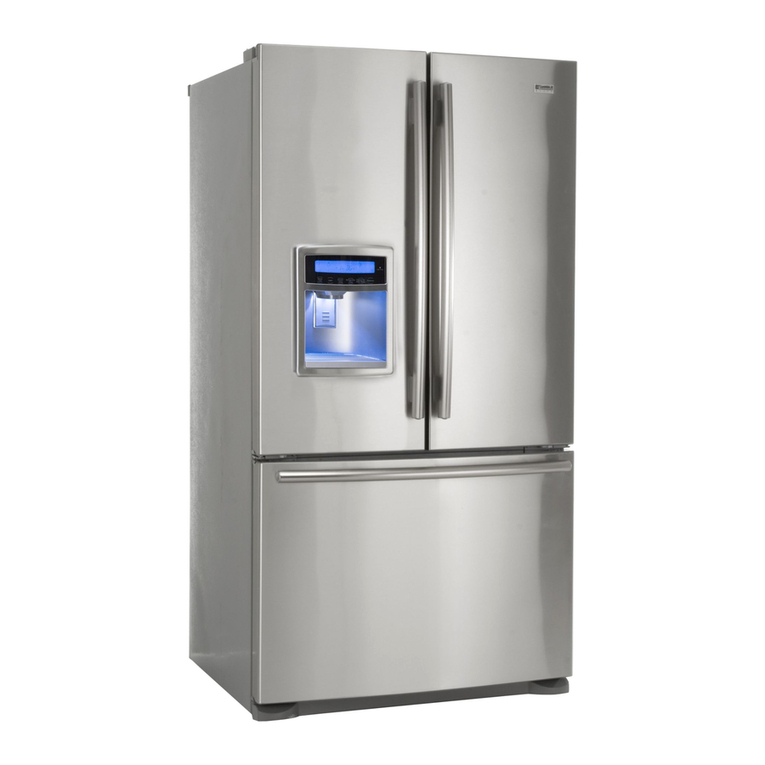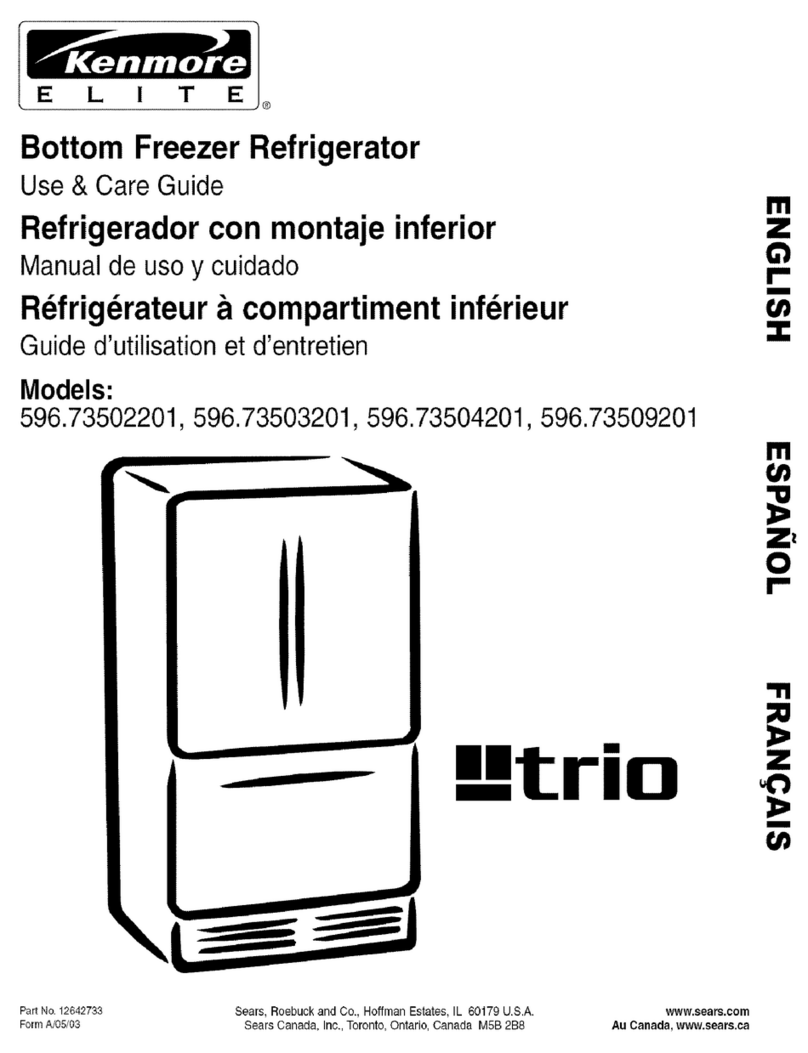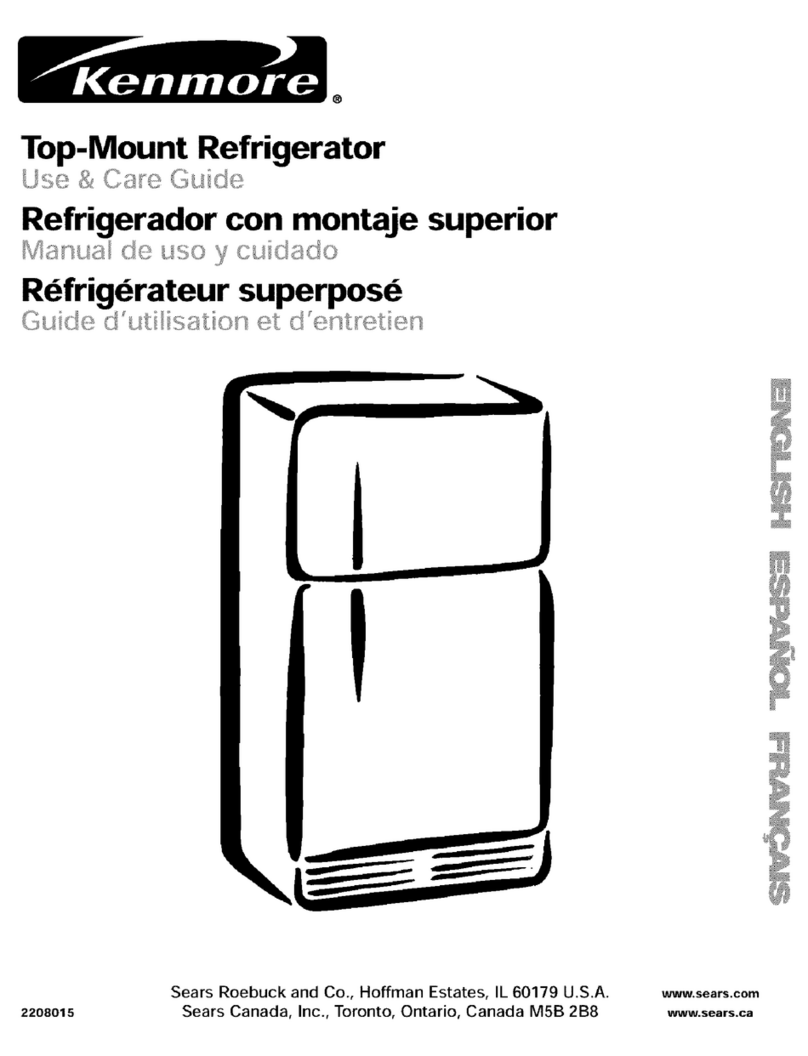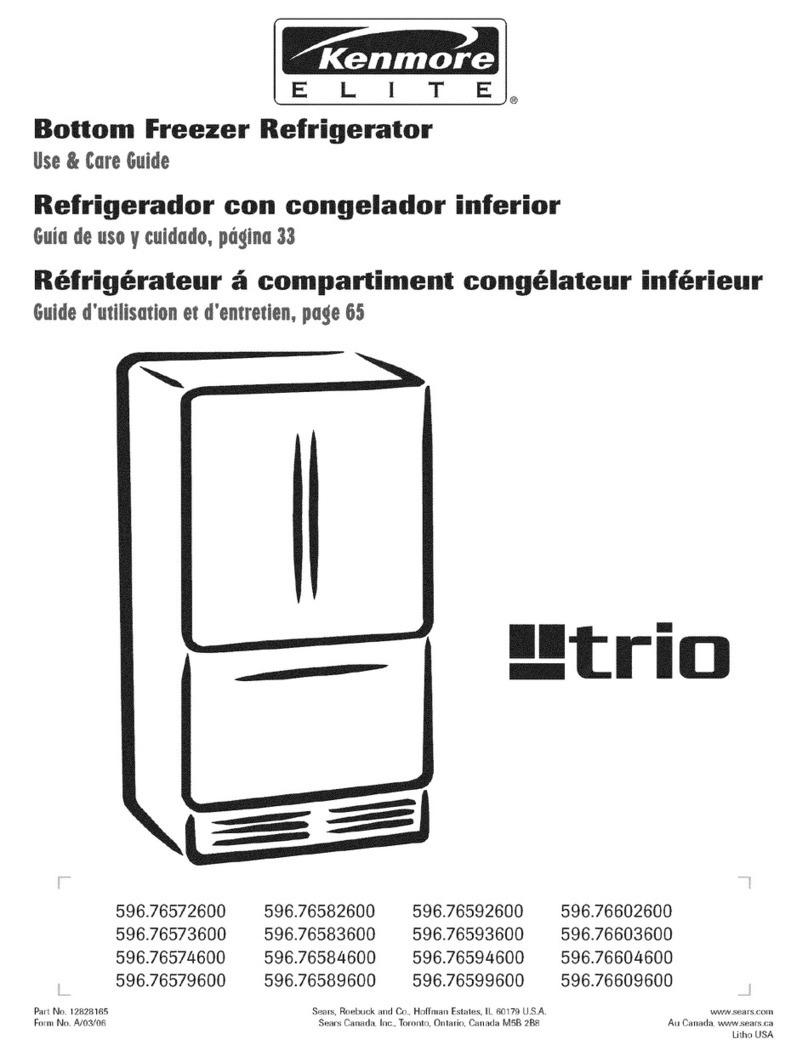XX XXXXXXXXXX
These Guidelines Must BeFollowedTo EnsureThat KENMORE REFRIGERATOR WARRANTY
Safety Mechanisms in This Refrigerater Will
Operate Properly. ONE YEAR FULL WARRANTY ON
ELECTRICAL INFORMATION
*The refrigerator must be plugged into its own
dedicated 115 Volt, 60 Hz., AC onJy electric outlet.
The power cord of the appliance is equipped with a
three@rong grounding pUugfor your protection against
eUectrbaUshock hazards, it must be pUuggeddirectUy
into a propedy grounded three-prong receptacb. The
receptacb must be installed in accordance with local
codes and ordinances. Consult a qualified electrician.
Do not use an extension cord or adapter plug.
, Immediately repair or replace any power cord that
becomes frayed or damaged.
, Never unplug the refrigerator by pulling on the power
cord. Always grip the plug firmly, and pull straight out
from the receptacle to prevent damaging the power cord.
, Unplug the refrigerator before cleaning and before
replacing a light bulb to avoid electrical shock.
, Performance may be affected if the voltage varies by
10% or more. Operating the refrigerator with insufficient
power can damage the compressor. Such damage is
not covered under your warranty.
, Do not plug the unit into an outlet controlled by a wall
switch or pull cord to prevent the refrigerator from being
Avoid connecting refrigerator toa Ground Fault Interruptor
(GFI) circuit,
IMPORTANT: Turning the refrigerator temperature
control to "0" turns off the compressor and prevents
your refrigerator from cooling, but does not disconnect
the power to the light bulbs and other e ectrical
components.To turn off power to your refrigerator you
must unplug the power cord from the wall outlet.
REFRIGERATOR
For one year from the date of purchase, when this
refrigerator is operated and maintained according to
the instructions supplied with it, Sears will repair this
refrigerator, free of charge, if defective in material or
workmanship. This one year time period does not
include the refrigerator water filter cartridge (if
equipped), which is an expendable part warranted for
only 30 days (see below).
FIVE YEAR FULL WARRANTY ON SEALED
REFRIGERATION SYSTEM
For five years from the date of purchase, when this
refrigerator is operated and maintained according to
the instructions supplied with it, Sears will repair the
sealed system (consisting of refrigerant, connecting
tubing, and compressor), free of charge, if defective
in material or workmanship.
30 DAY FULL WARRANTY ON WATER FILTER
CARTRIDGE (if equipped)
For thirty days from the date of purchase, Sears will
replace the refrigerator water filter cartridge if it is
defective in material or workmanship.
All above warranty coverage applies only to
refrigerators which are used for storage of food for
private household purposes.
Warranty service is available in the United States or
Canada by contacting Sears at 1-800-4-MY-HOME ®
(1-800-469-4663).
This warranty applies only while this product is in use
n the United States or Canada. This warranty gives
you specific legal rights, and you may also have other
rights which vary from state to state or province to
province.
Sears, Roebuck and Co., Dept. 817WA, Hoffman
Estates, IL 60179
Sears Canada Inc., Toronto, Ontario, Canada M5B 2B8

